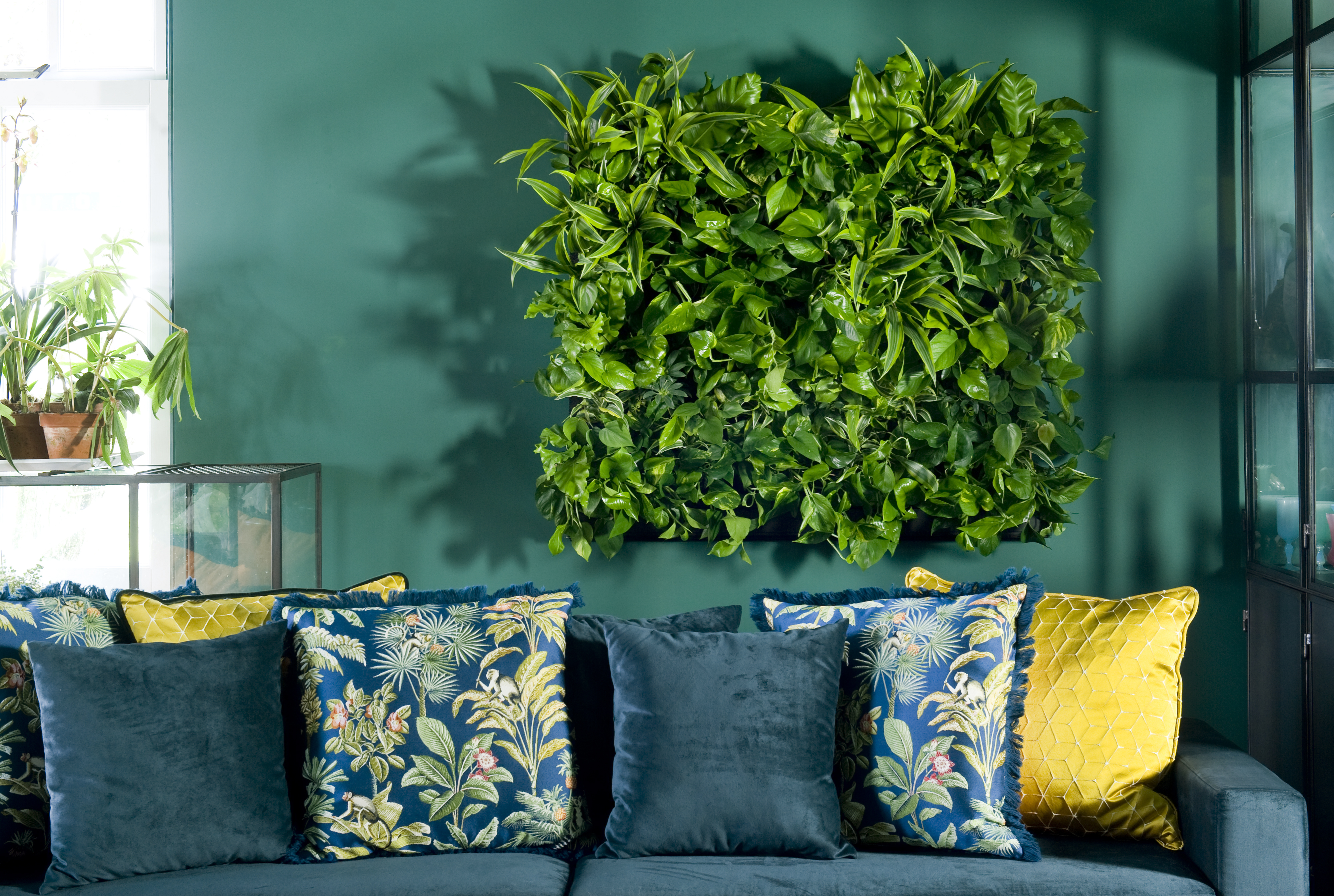Living Walls: An Overview
Globally, a huge number of buildings are constructed causing nature to deteriorate. Water is being drained, chemical usage is increasing, and energy is getting over-consumed. As a result, the global ecosystem is shaped and human life is being affected physically and psychologically. Being concerned with this harsh new reality, scientists and environmentalists are trying to reconnect with nature in the best possible way. They are investing all their time and efforts to shift toward more suitable choices to retain nature and its greenery aspects (Sheweka and Magdy, 2011). One of the best and most sustainable ways is building green living walls.
What are living plant walls?
Living wall plants are also called vertical living gardens that install vegetation into our built environment (Fox et al., 2022). These plant walls are considered this century’s modern biological technology, and great architectural designs that can lessen the burden of climate change. These vertical living gardens are not just outdoor green wallers but they can also be supported inside our homes in the form of living walls indoors.

Benefits
Planting green roofs whether they are living walls outdoors or indoors has many benefits like thermal efficiency and thermal resistance. This façade cladding treatment on walls minimises the thermal radiation reaching our home hence controlling the indoor temperature in the urban realm, especially in a warm climate. Solar energy reaching the plants is used in photosynthesis, evapotranspiration and some percentage of it is reflected.
Besides that, vertical gardens regulate and improve the air quality (Perini and Rosasco, 2013), hence preventing individuals from premature deaths and lung diseases in later stages. This biogenic regulation is done in various ways. The main idea is that plants absorb CO2 and release O2 because of photosynthesis.
In addition, plant leaves have micropores that transpire and increase humidity (Razzaghmanesh and Razzaghmanesh, 2017). The leaves and the anchor system attract the dirt, reducing the release of the air dirt. This happens with the help of the plant’s microbiome that feeds on that dirt.
Living walls not only enhance biodiversity but it is also home to many biological organisms like bees, butterflies, birds and other insects. They not just provide shelter but also food. This can also store the species that are on the verge of extinction e.g. bees.
On the other hand, urban life has affected us psychologically and emotionally. We, humans, are biophilic. This restoration of greenery can relax us mentally, reduce anxiety and depression. This can increase our productivity in any work.
Furthermore, the installation of Eco-friendly greenery can be aesthetically pleasing. It can also increase profit in some businesses e.g Hotels’ implanting this on their building are a bit more expensive than the normal ones.
The image below shows some benefits of green walls such as reducing pollution, improving mental and emotional health, increasing property value, etc.
Authors
Ayesha Hameed Khattak, Lama Masri, Anish Rajani
References
Fox, M. et al. (2022) “Living wall systems for improved thermal performance of existing buildings,” Building and Environment, 207, p. 108491. Available at: https://doi.org/10.1016/J.BUILDENV.2021.108491.
Perini, K. and Rosasco, P. (2013) “Cost–benefit analysis for green façades and living wall systems,” Building and Environment, 70, pp. 110–121. Available at: https://doi.org/10.1016/J.BUILDENV.2013.08.012.
Razzaghmanesh, Mostafa and Razzaghmanesh, Morteza (2017) “Thermal performance investigation of a living wall in a dry climate of Australia,” Building and Environment, 112, pp. 45–62. Available at: https://doi.org/10.1016/J.BUILDENV.2016.11.023.
Sheweka, S. and Magdy, N. (2011) “The Living Walls as an Approach for a Healthy Urban Environment,” Energy Procedia, 6, pp. 592–599. Available at: https://doi.org/10.1016/J.EGYPRO.2011.05.068.
